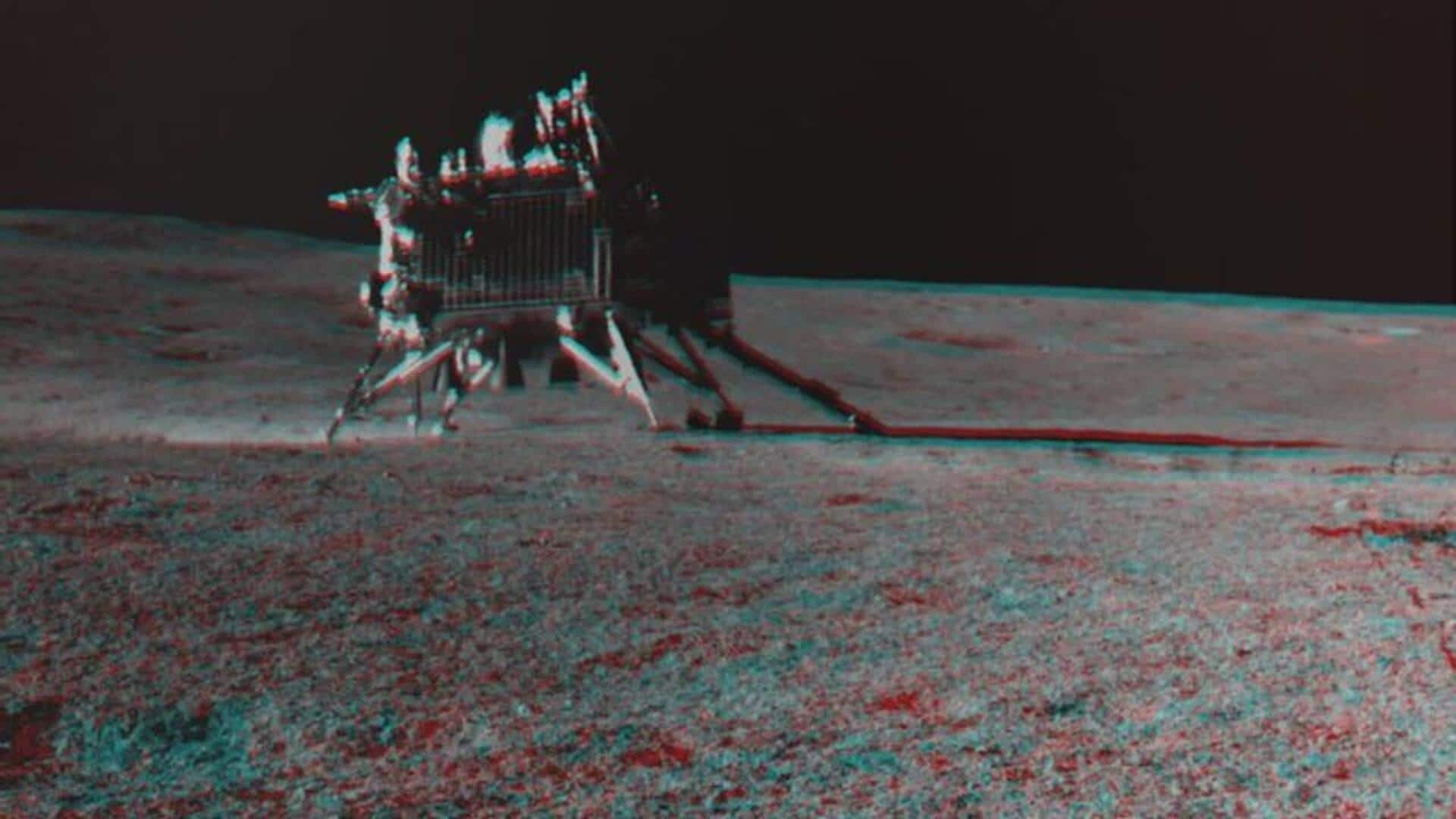
Moon has more ice than previously thought, reveals Chandrayaan-3 data
What's the story
According to data from the Chandrayaan-3 mission, ice could be more widespread below the Moon's surface than we thought. The study emphasizes how drastic local variations in surface temperatures can directly affect ice formation, and looking into these ice particles can reveal "different stories about their origin and history." The research, led by Durga Prasad Karanam from the Physical Research Laboratory in Ahmedabad, was published in Communications Earth and Environment journal.
Mission details
Chandrayaan-3's instrument aids research
The Indian Space Research Organisation (ISRO)'s Chandrayaan-3 mission landed near the Moon's south pole on August 23, 2023. Three days later, the landing site was named 'Shiv Shakti Point.' For this study, researchers analyzed temperatures at and up to a depth of 10cm beneath the lunar surface using data from 'ChaSTE,' a probe on board Vikram lander.
Impact of slope
Temperature variations influence ice formation
The landing site was described as "a Sun-facing slope angled at six degrees," where temperatures varied from approximately 82°C to -170°C. But, just a meter away on a flat surface, temperatures peaked at about 60°C. Karanam explained that this slight slope led to increased solar radiation at the ChaSTE penetration point, affecting the temperature and possibly impacting ice formation.
Ice accumulation
Model predicts potential ice accumulation locations
The team developed a model suggesting that slopes inclined more than 14 degrees, facing away from the Sun and toward the Moon's nearest pole, could be sufficiently cool for ice to accumulate near the surface. Meaning, there could be multiple areas on the Moon where ice can form and be accessed more easily than previously thought. These conditions are similar to those proposed for NASA's manned mission to the Moon's south pole — Artemis.
Lunar conditions
Moon's surface conditions and future exploration
Answering queries about ice potentially turning into water on the Moon, Karanam told PTI that "Water in liquid form cannot exist on the lunar surface because of ultra-high vacuum. Therefore, ice cannot transform into liquid, but would rather sublimate to vapor form." He said that ice serves as a potential resource for future lunar exploration and habitability. "Techniques and strategies need to be developed for extraction and usage of ice for long term sustainability on the Moon," Karanam added.